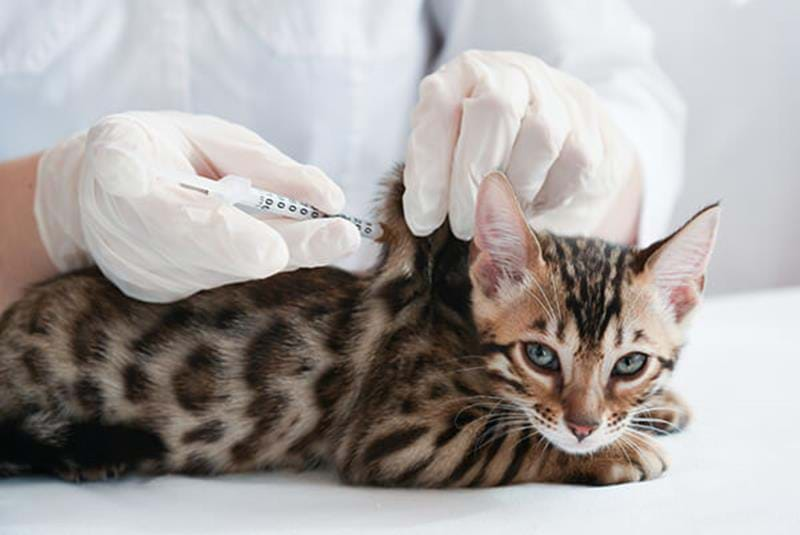The most common worms affecting cats are roundworms and tapeworms.
HOW OFTEN SHOULD YOU DEWORM A CAT?
Adult outdoor cats are dewormed more often than indoor cats because they catch mice and other small animals that can be hosts to various parasites. Indoor cats are normally not affected by worms as they don’t catch and eat small animals. There is a risk however, that they may get infected by other cats at cat litter boxes.
The Swedish Medical Product Agency recommends you only deworm your cat if your suspect it to be infected and not for preventive purposes. If you deworm your cat too often, you risk it becoming resistant to the deworming medication, meaning it may become difficult to treat the cat against worms in the future. If you are in doubt, contact your vet for an examination or a stool sample.
More information
Rectal and endo-parasite infection medication for dogs and cats – treatment recommendations
WHEN SHOULD YOU DEWORM YOUR KITTEN?
Kittens are often infected by roundworm from their mother when they breastfeed, which is why a kitten should be dewormed more frequently than an adult cat. Kittens are dewormed for the first time before they are three weeks old.
A kitten is usually dewormed by a breeder before you purchase it and take it home at 12 weeks of age. If it’s not dewormed, then you need to ensure it is dewormed repeatedly until it’s 3 months old. Exactly how often depends on which deworming medication you use. Ask your vet if you are unsure.
SYMPTOMS OF WORMS IN CATS
Cats may have worms without showing any specific symptoms, but you often detect it by noticing worms in your cat’s feces or vomit. The cat may also show signs of weight loss, develop dull coat or vomiting or have diarrhea.
HOW TO REDUCE THE RISK OF YOUR CAT BECOMING INFECTED AND STOPPING THE WORM SPREADING
Cats can be infected by worm in different ways.
Both roundworms and tapeworms can be transmitted by the cat eating small animals such as mice, rats and birds. If you have several cats in your household, there is also a risk that the invisible roundworm eggs will spread through, for example, the litter box or shared blankets. Dogs and cats can also transmit the infection between each other.
It is critical to carefully clean the cat litter box regularly if you suspect your cat has worms. Also clean toys, blankets and other items the infected cat is using.
THIS IS WHAT ROUNDWORM AND TAPEWORM IN CATS LOOK LIKE
Roundworm is the most common type of parasite in cats and it’s believed that about 5-15 percent of all outdoor cats have roundworm. The colour of the roundworm varies but it’s usually yellow-white and a few centimeters in length.
Tapeworms are long, flat and white in colour. They look a bit like rice grits and are about a centimeter long. The tapeworm does not spread via the cat’s faces, but only via prey in nature, which is why tapeworm is more common in adult outdoor cats.






